This post is part of our collection of Home Projects. Sign up for our newsletter to receive family-friendly activity, recipe and craft ideas throughout the year!
If you look closely, you’ll notice that the recipes on this site published before April 2018 are all prepared without a wok. Crazy, right? That’s more than 35 authentic dishes prepared without the most indispensable of Chinese cooking implements.
I did this, in part, simply to show that it could be done. To show that you can cook delicious Chinese food without a wok, in case you don’t happen to have one yourself. This site strives to bring down barriers, after all.
I also cooked without a wok because I wasn’t sure I was ready to have one. You see, I consider owning a wok something of a journey. It’s a pan that slowly acquires a dark, non-stick patina with repeated use, each meal carrying with it a memory of an weeknight dinner, holiday gathering or family celebration. A not-insignificant psychic commitment.
In recent years, I hesitated to buy a wok because I had actually owned one about a decade ago. I cared for it poorly, used it infrequently and ultimately discarded a bent, rusted pan in the basement of our New York apartment building. The entire experience was a discouraging mess.
However, buoyed by my renewed commitment to cooking Chinese food at home, I decided to buy a new wok shortly after Chinese New Year two months ago. After considerable research, I settled on a flat-bottomed 14″ carbon steel wok for use on our electric stove and visited The Wok Shop in San Francisco to make my purchase.
It’s imperative to season a new wok after bringing it home, a process I describe below with the help of stir frying doyenne Grace Young. Standing above the green onions and ginger sizzling in my new pan, I could begin to smell the wok hei, or breath of the wok, that’s the signature of so many Chinese dishes.
Now that I have a wok in my kitchen again, the real work can start and I’ll be able to cook everything on this site with the help of my new carbon steel sidekick. And with each new recipe added, you’ll hopefully notice the wok advancing on its journey, slowly darkening with each use.
Here’s how to season a new wok, step-by-step. The detailed tutorial with pictures and directions is at the bottom of the page.
Your turn! Can you share any tips from your experience seasoning a new wok? Want to ask a question before getting started yourself? I’d love to hear from you in the comments section below!
How To Season A New Wok
Prep Time: 5 Minutes | Project Time: 30 Minutes

Materials
1 bunch of green onions, cut into 2″ pieces
1/2 cup ginger, sliced
2 tablespoons peanut or grapeseed oil
Steel wool pad
Sponge
Bamboo brush
Step-By-Step Tutorial

New woks come covered in a light coating of oil to protect them during transportation. You’ll want to remove this layer by scrubbing the wok vigorously, inside and out, with a steel wool pad in warm, soapy water.
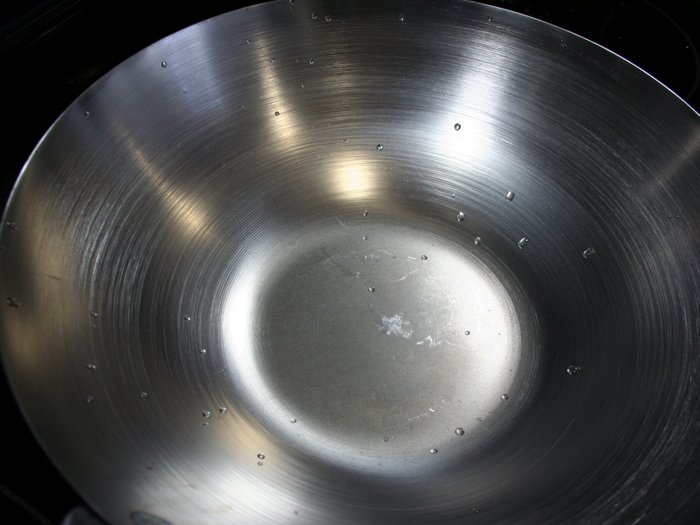
Dry the wok on the stove over low heat until all the little water drops have evaporated.
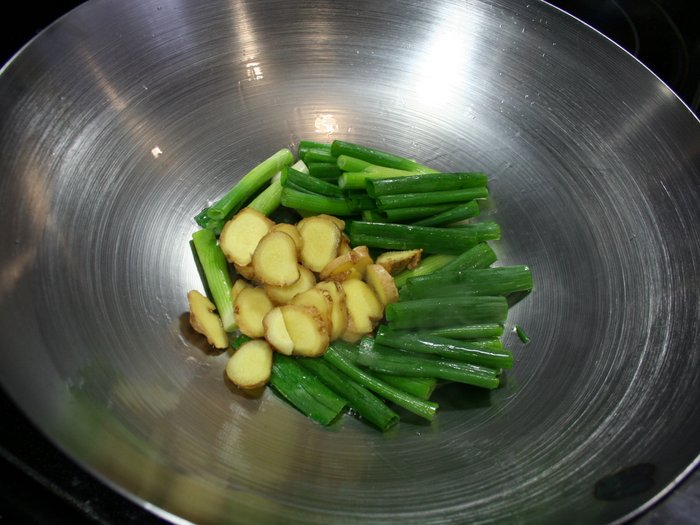
Open your windows and turn on your overhead vent, then heat the wok over high heat. Reduce the heat to medium-high, add the two tablespoons of oil, the ginger and the green onions. (Note that you should use a high smoke point oil like peanut or grapeseed.)
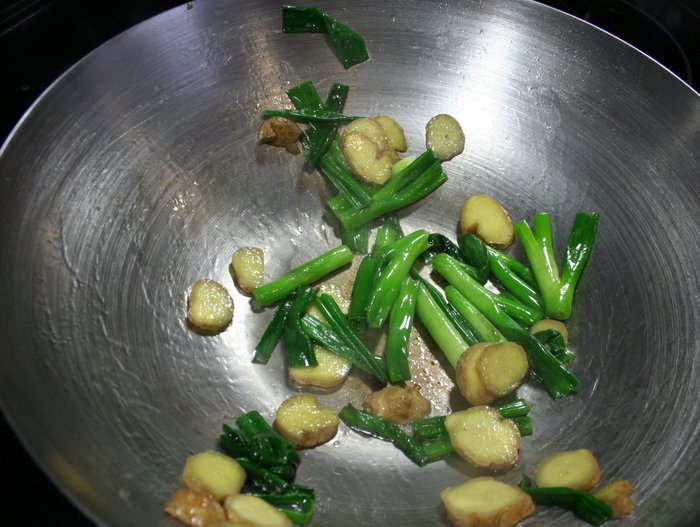
Stir fry the vegetables for 15 minutes, taking particular attention to move them up the sides of the wok while cooking. You really want to get the vegetables and oil all over.
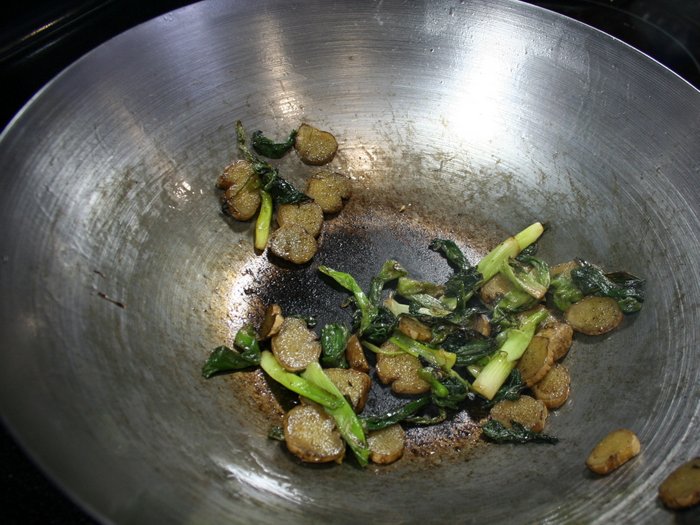
Over time, the vegetables will begin to darken, the sides of the wok will start to turn a dull brown and you may begin to accumulate burnt vegetable bits at the bottom of the pan. This is all good news!
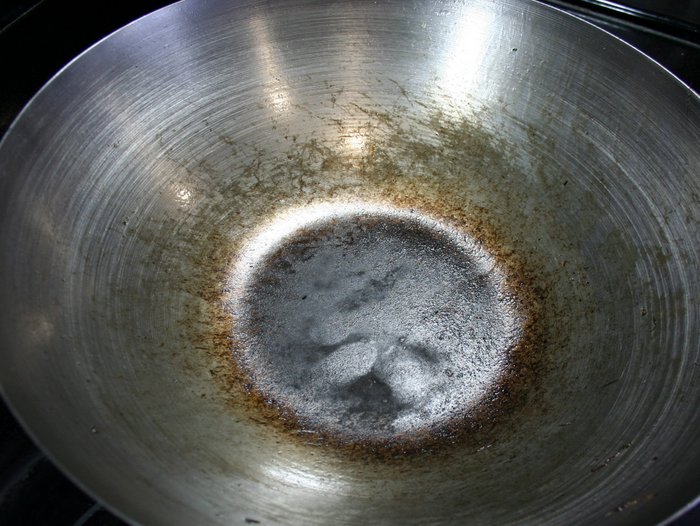
At the end of 15 minutes, remove the wok from the heat and discard the vegetables. Allow the wok to cool.
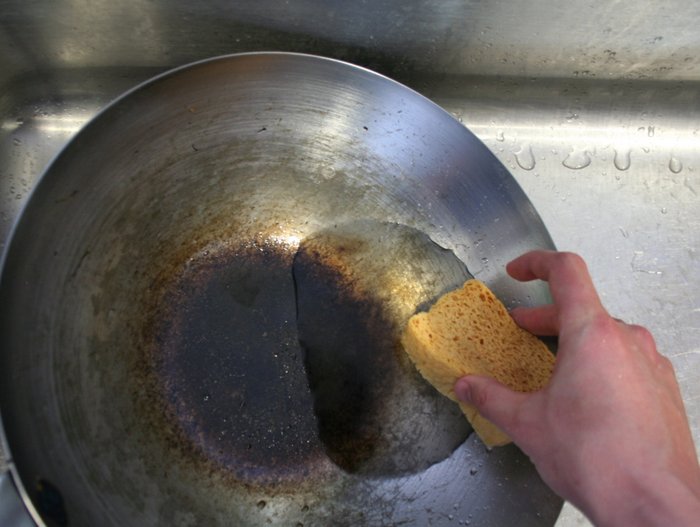
Once seasoned, you’ll want to clean the pan out again, but this time don’t use a steel wool pad or soap. Dislodge any burnt food particles with a bamboo brush, or similar non-abrasive implement, then gently wash with a sponge.
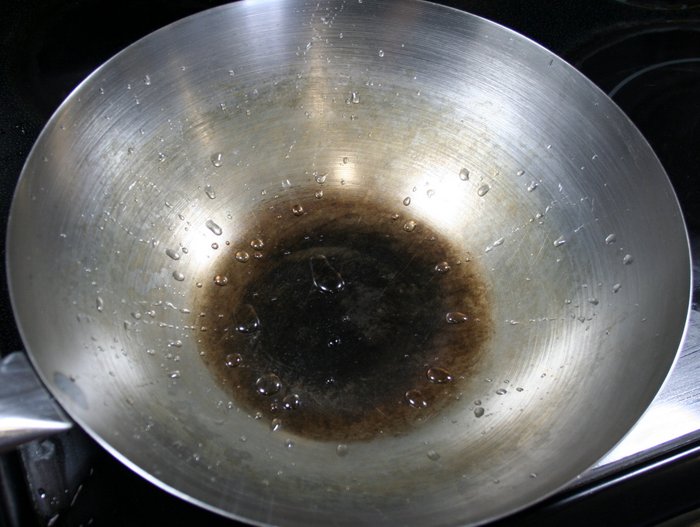
Once again, dry the wok on the stove over low heat until all the little water drops have evaporated.

Store your wok in a cool, dry place. It’s now seasoned and ready to be used for cooking!
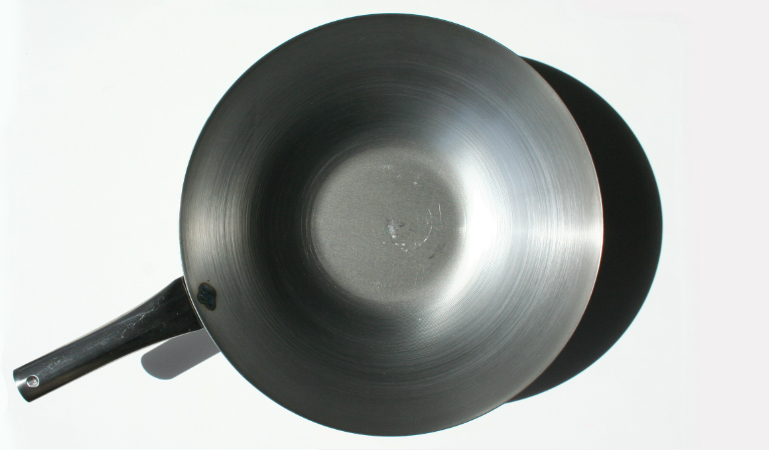



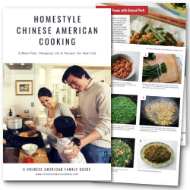
Evelyn
I’ve had a wok I didn’t properly season as well! I may still have it somewhere in my garage! You’re right, never REALLY needed a wok to cook Chinese food. In fact, my parents who had a restaurant never used one at home. But they loved their black iron skillet! A wok is great in that it’s big and roomy to move food around while cooking. Less mess on the stove. Great instructions!
Wes Radez
Totally agree, Evelyn. Not absolutely required, but adds a lot of enjoyment and I’m looking forward to the journey! ~Wes
Maxine
Hello Wes,
I am a Chinese-American who recently discovered that cast iron is a Chinese invention. The process to make cast iron then spread westward to India and Europe. That cast iron skillet is a relative of the wok!
I too had to learn how to care for a wok. My wok had a crust on it that is now disappearing as I clean it the way it is supposed to be cleaned. Not only do people use the wok–other people are going back to the cast iron skillet. Sometimes these old technologies are the best!
Wes Radez
Thank you for sharing your discovery, Maxine! All that’s old is new again! ~Wes
Spocku
Hi Wes, the issue I have with my wok is not the seasoning but the continued use of it. Perhaps I don’t season properly even though I follow all the different approaches exactly. The problem is that at some point food sticks to the wok. How does one clean that off? Also, even if food does not stick it seems like even a gentle wash with soap and water after cooking causes rust to form on the cooking surface unless I coat it with oil before putting it away. There are many resources on the web regarding seasoning a wok but not much on continued care of the wok after use. Thanks.
Wes Radez
Hi Spocku, great question. Yes, the trick of it is cleaning out your wok completely, without relying on soap and abrasives that will break down the patina you create over time. I find that a traditional bamboo whisk works best. It scrubs well without scratching. After washing, I set the wok on a burner over medium heat for about 5 minutes to dry the pan and prevent rust from forming. ~Wes